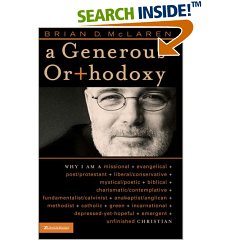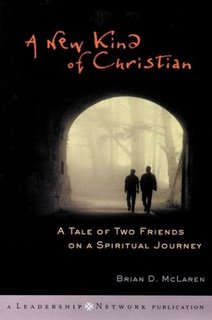The Missional Leader

Summarize:
The first agenda of “The Missional Leader” was to describe the culture and environment in which the North American church currently exists. The authors distinguish the difference between a missional orientation to life, ministry leadership verses a repackaging of church growth strategy using missional language. The pastor as shepherded and the pastor as CEO are compared and contrasted with what they call the missional leader. Building on the theological foundations of Darrell L. Guder, Leslie Newbegin and others Roxburgh and Romanuk seek to outline the skill and structures needed by those who wish to create missional environments for the sharing of the Gospel of Jesus.
Observe:
In describing the context of the church in North America the authors label three zones of missional leadership. These zones assume the church is in a state of change and will continue to experience high levels of change. The emergent zone is a time of pioneering, creativity and experimentation. The performative zone arises out of the emerging success and has a galvanizing, systematizing and controlling effect on the culture of the organization. The reactive zone describes the crises that occurs when the system and structures of the performative zone stop producing the great results they once did. In the reactive zone leaders often respond to the confusion and instability by managing and reinforcing (working harder and longer) on ineffective systems. These situations need leaders who will transition into a time of creativity and emergence. Many North American congregations and denominations are currently in the reactive stage of organizational life. The temptation of these organizations is to focus on programs, alignment and a quick fix. The road to becoming a missional organization requires the leader to address both the culture they exist in and the culture they hope to create.
Believe:
Roxburgh and Romanuk believe there is a model for leaders to follow to address the rapid change and instability in our organizations and culture. The skills they hope to share with leaders are focused on engaging culture and the Spirit of God through what they call a “Missional Change Model.” The model has five steps that are not linear, but can be described as sequential. The first step is “awareness” and is what I would describe as an environment where listening to God and others is the number one value of leaders. The second step takes what has been learned through listening and seeks “understanding.” The skill articulated for engaging in these activities are: Dwelling in the Word, the Daily Office, and Hospitality to the Stranger. Leader are then encouraged to connect their awareness and understanding with a process of critical evaluation including culture, the organization and their leadership. A leader is encouraged to undergo a 360 evaluation in the areas of authenticity, self awareness, conflict management, personal courage and trustworthiness. Once the first 3 steps are in motion it is time to “Experiment.” This is when people who have been taught to hear from God and each other are challenged to action. The final stage of the change model requires a commitment to what is essentially the new structure and system for engaging culture with the Gospel of Jesus.
Doubt:
The authors speak of creating a safe place for imagination and experimentation. They also encourage leaders to maintain a sense of stability in worship and teaching during these times of confusion and change. This seems like the appropriate advice for those hoping to transition or turn around and existing organization. Those who are starting new organizations do not always have these standard safe places of worship and teaching. Can an organization successfully re-imagine their structures of worship, or pedagogies for teaching? This is precisely what some new churches are attempting to do. They are finding new ways to re-image their Worship Gathering as a community participating together and teaching one another. They are transitioning out of a consumer based (expert) culture of teaching and worship. In this situation they find themselves desperate for stability, but still yearning for creativity.
Assess:
“The Missional Leader” treads the dangerous water of presenting models and applications for the postmodern condition of the culture and church. The “Missional Change Model” asks the right questions and forces leaders to acknowledge their need to learn. Becoming a missional leader seems to present an incredibly high and difficult challenge of both engaging culture and creating new environments. Roxburgh and Romanuk suggest a return to several spiritual disciplines to navigate these challenges by hearing and following the Spirit of God. They present a model of leadership that honors both God and the people who make up the church.



